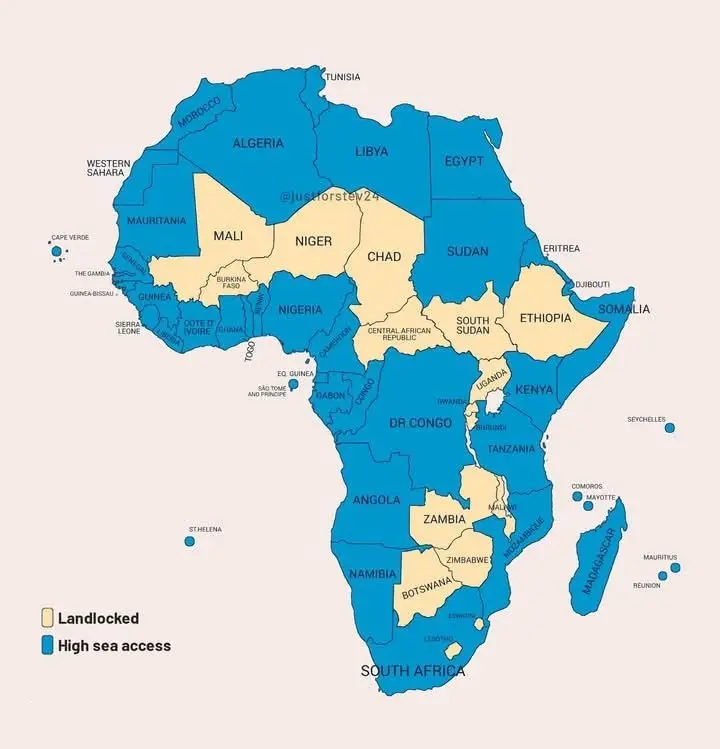Africa’s 16 landlocked developing countries (LLDCs) have long faced a paradox of geography and economy: though endowed with vast natural resources and a youthful population, they remain disconnected from the global trading system and regional markets, often locked in cycles of poverty and underdevelopment.
From Botswana to Zimbabwe, these nations shoulder the burden of high transport costs, poor infrastructure, and heavy dependence on coastal neighbors for trade, a legacy of colonial borders and historical underinvestment in regional integration. Yet, a new paradigm is emerging: transforming these countries from landlocked to land-linked, unlocking opportunities for sustainable growth, industrialization, and inclusive prosperity.

The term “landlinked” transcends mere physical geography; it represents a mindset shift, an economic and political reorientation that sees LLDCs not as victims of their borders, but as pivotal players in regional corridors, value chains, and global supply networks. This vision aligns with the 2019 High-Level Midterm Review of the Vienna Programme of Action (VPoA), which sounded the alarm on the persistent challenges LLDCs face.
The Review called for urgent action: building efficient transport corridors, reducing travel time, and integrating international transport management systems to eliminate duplication of effort. At its core, this is a clarion call to African governments to think beyond borders and build cross-border infrastructure that knits together economies, enhances trade, and drives sustainable development.
The challenges are stark. Landlocked African countries suffer from average transport costs that are up to 50% higher than their coastal peers, often swallowing up export earnings and inflating the prices of essential imports. Yet the continent is not without hope, or examples of what’s possible. The Trans-West African Coastal Highway (TAH 7), stretching from Mauritania to Nigeria, is a shining beacon of regional cooperation. This six-lane artery, currently focused on the Abidjan-Lagos Corridor, is set to integrate 12 West African coastal nations, with feeder roads linking landlocked Mali and Burkina Faso.
More than an engineering marvel, it is a lifeline for regional trade, promising to transform isolated economies into thriving trade partners within the ECOWAS bloc. The Africa Continental Free Trade Area (AfCFTA) will amplify this impact, catalyzing intra-African trade, stimulating local industries, and reducing dependency on extractive commodity models that have historically failed to deliver jobs or sustainable growth.
Another noteworthy development is the collaboration between Namibia and Botswana to jointly build an oil refinery, a bold move that promises not only to reduce dependence on imported refined petroleum products but also to enhance regional energy security.
For Botswana, a country often perceived solely as a diamond producer, this is a strategic pivot: positioning itself as an industrial partner, an innovator, and a driver of regional development. For Namibia, the refinery signals a commitment to cross-border collaboration that leverages each country’s strengths, logistics in Namibia’s Walvis Bay corridor, energy regulation, and economic diversification.
At the policy level, UNCTAD has been at the forefront of championing transformative approaches for Africa’s LLDCs. The organization rightly points out that past commodity-driven growth models have not delivered the promises of decent jobs and poverty reduction.
Instead, a new generation of policies is needed, policies that prioritize value addition, technology transfer, local manufacturing, and sustainable corridor management. UNCTAD’s support, grounded in the VPoA, translates these goals into tangible technical assistance that empowers African countries to build resilient supply chains and regional integration frameworks.
The transformation from landlocked to land-linked is ultimately about mindset. It requires governments to see borders not as barriers but as bridges, opportunities for trade, innovation, and shared prosperity. It challenges policymakers to design transport corridors that are not just highways but economic lifelines, integrating ports, railways, digital infrastructure, and industrial parks.
It calls on investors to look beyond extractive industries and see African LLDCs as vibrant markets and industrial hubs. It demands that entrepreneurs, especially Africa’s dynamic youth, rise to build solutions that drive cross-border trade, supply chain integration, and regional value chains.
This is not a dream. It is a strategy, a blueprint for transforming Africa’s economic narrative from isolation to integration. As African countries collaborate to build corridors like the TAH 7, invest in joint ventures like the Namibia-Botswana oil refinery, and embrace regional free trade under AfCFTA, they are laying the groundwork for a continent where no country is left behind, no economy is closed, and no border is a barrier to progress.
Africa’s LLDCs stand on the cusp of a new dawn. With visionary leadership, strategic investment, and unwavering commitment to regional cooperation, these nations can move from the margins of global trade to the center of Africa’s economic transformation. The journey from landlocked to land-linked is not just about moving goods; it is about moving people, ideas, and futures toward shared prosperity.
